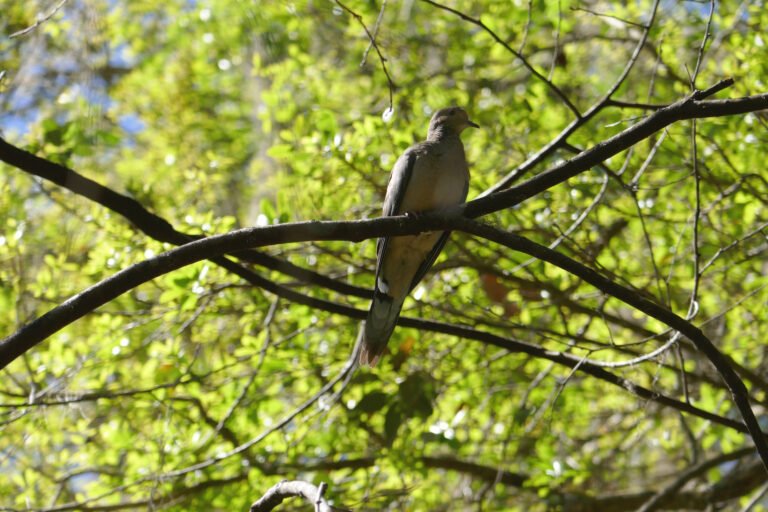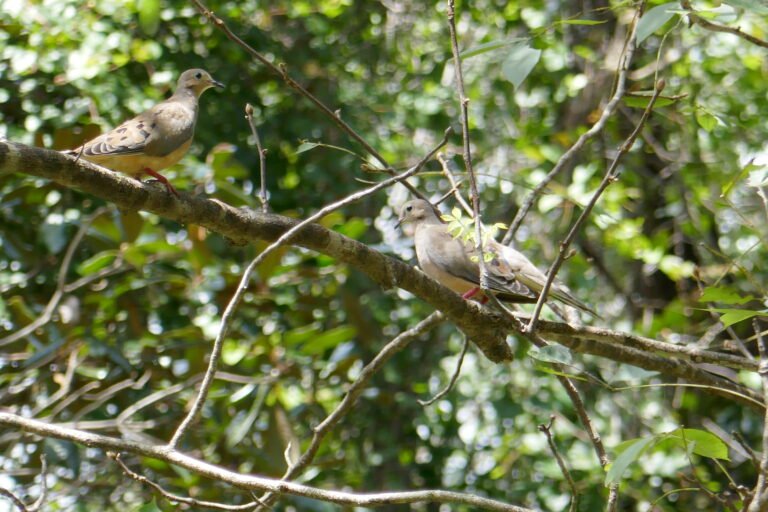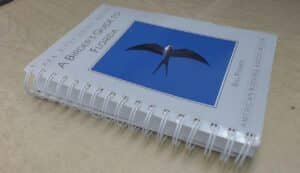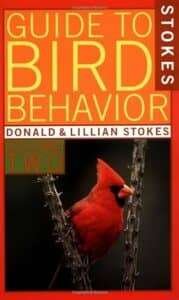
Mourning Dove
(Zenaida macroura)

Description
The mourning dove is 12 inches in length with a wingspan of about 18 inches. Their bodies are grayish brown in color with a long tail that is bordered in white. They have small beaks and pink legs and feet. Their wings have black spots and a black spot underneath each eye. The male and female look very similar, but the male is larger and tends to have an iridescent sheen to his breast and face. They live about 2 to 5 years.
Scientific Name & Family
Mourning dove (Zenaida macroura) is a member of the Columbidae, or dove, family of birds.
Common Name
Some other common names are the American mourning dove, the rain dove, turtle dove, Carolina pigeon and Carolina turtledove. Their name comes from their mournful cooing call.

Behavior
They readily visit bird feeders and bird baths. They much prefer ground level bird baths and platform, or table, feeders. They will eat most bird food mixes as well as cracked corn and sunflower seeds. They are large and cumbersome so small bird feeders can be a challenge for them.
When they take flight their wings make an odd, very distinct, whistling sound, and they have a very soothing, distinctive, cooing call.
They love to sunbath and can be found with a wing outstretched, and flung over their back to get the sun to hit underneath where the itchy bugs reside. When one first encounters this behavior it can be unsettling because they appear to be injured. Nesting birds may exhibit this behavior to distract predators from their nest or young.

Habitat
The mourning dove is found in open habitats such as fields, open woods, cities and suburban areas. They adapt well to living with humans.
Range
Mourning doves are found throughout the United States north into Canada and south into the Caribbean. They are native and protected under the Migratory Bird Treaty Act although many in Florida do not migrate. They are a favorite of hunters and many states allow regulated hunting of them.
Food
Mourning doves eat a variety of vegetation including grass seeds and grains. During the breeding season they will consume insects and small snails in order to supply the chicks with as much protein as possible.
They forage on the ground underneath bird feeders and a scattering of cracked corn or sunflower seeds make them very happy.

Nesting & Young
The male collects nesting material which usually consists of dried grass, pine needles, twigs and other light plant material. The nests are located in trees or shrubs, are made into a platform shape, and can be anywhere from five to fifty feet off the ground. Manmade nesting boxes are best if they are open and more platform than box. They nest around homes in a variety of locations from hanging baskets, front door wreaths, window ledges, and any place they feel is protected enough to raise their young.
Once a suitable nest sight is found the male brings nesting material to the female one piece at a time. Both parents incubate the eggs. They hatch in about fourteen days. The chicks hatch altricial, which means they cannot feed themselves. Both parents feed the chicks by regurgitating food from their crops which is sometimes referred to as pigeon milk. The “milk” is a mixture of the parent’s food items along with water, fat, protein and minerals. [1]
The chicks leave the nest (fledge) at about two weeks old. After they leave the nest they stay by their parents for several weeks. The parents will put the chicks in a safe location and come back to check on them occasionally. So if you see a fledgling mourning dove hiding amongst the foliage leave it be so its parents can come back and tend to it.
The juveniles have mottled coloration on their feathers for camouflage.
In Florida they may have up to six broods a year.

References:
[1] Donald & Lillian Stokes. A Guide to Bird Behavior: Volume II In the Wild and at Your Feeder. 1985 [See the link above for the book].





